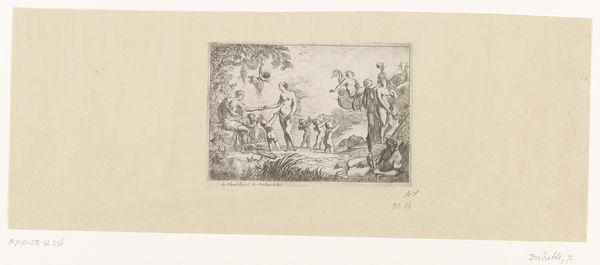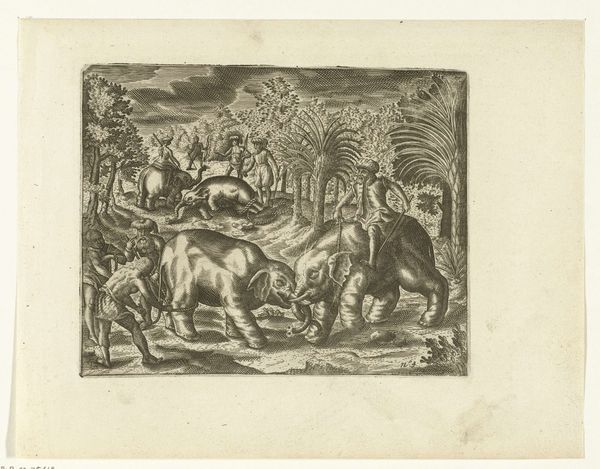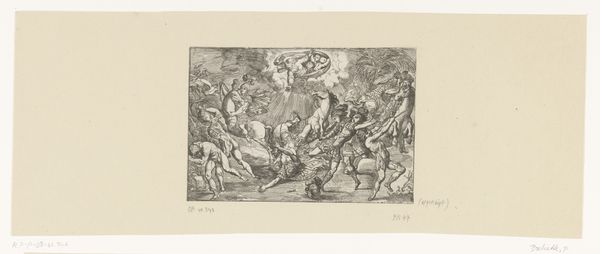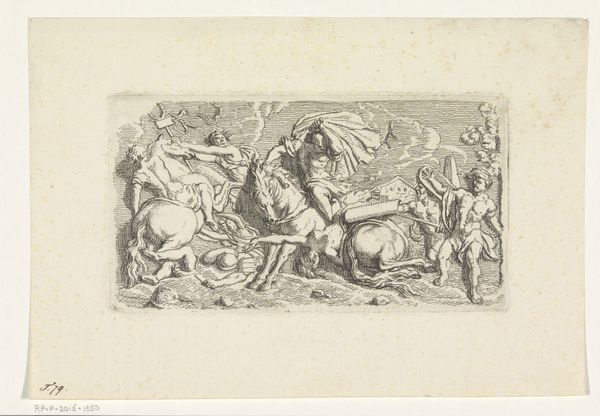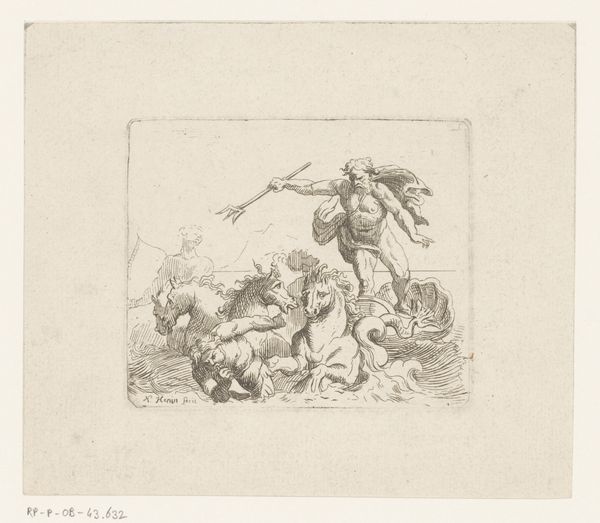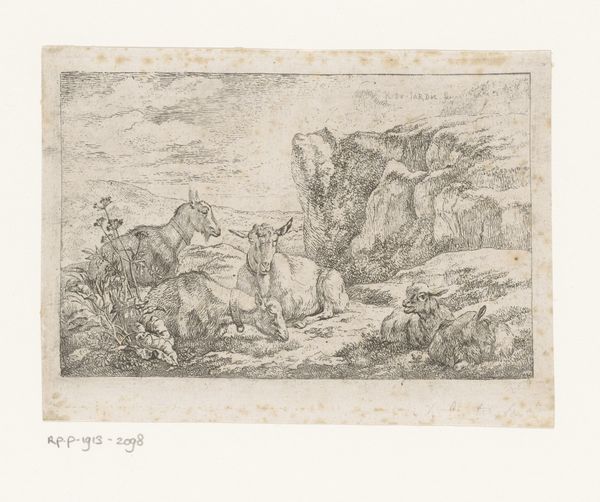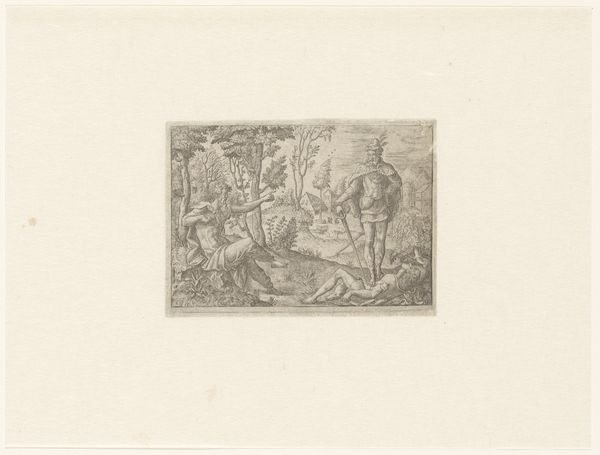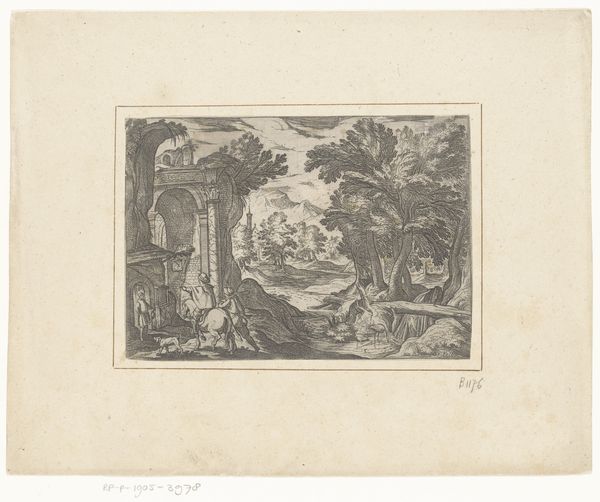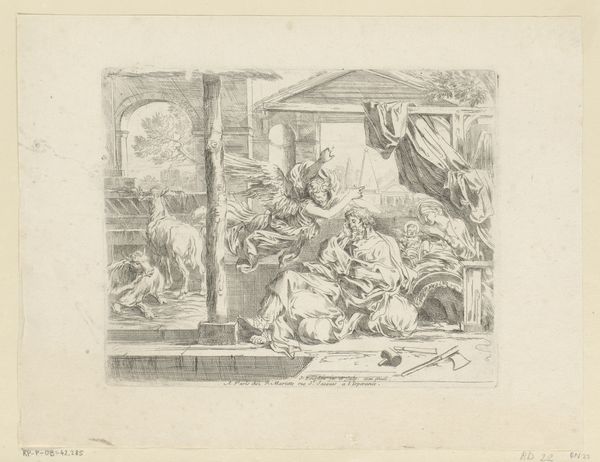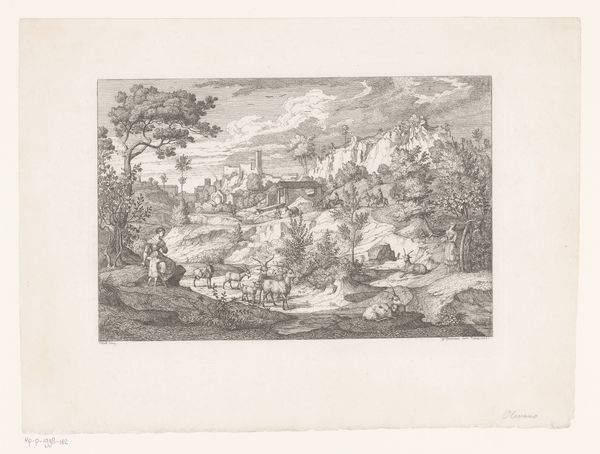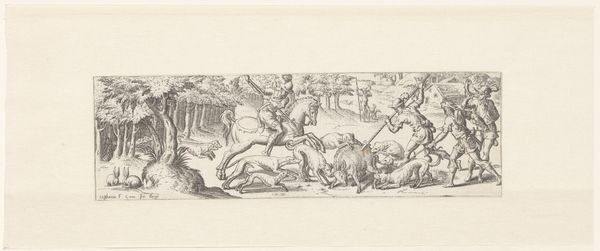
print, etching
#
baroque
# print
#
etching
#
landscape
#
figuration
#
history-painting
Dimensions: height 119 mm, width 162 mm
Copyright: Rijks Museum: Open Domain
This engraving by Pierre Brebiette, housed at the Rijksmuseum, depicts Hercules rescuing Deianira from Nessus. Here, we witness the immediate aftermath of Hercules’s arrow piercing Nessus, the centaur, who had attempted to abduct Deianira. Consider the centaur, a creature of duality, embodying both human intellect and animalistic urges. This symbol stretches back to ancient Greece, where centaurs represent the untamed aspects of human nature. Yet, across time, the centaur morphs. In some medieval bestiaries, it appears as a wise sage, a far cry from its earlier, more savage portrayals. Here, the centaur's agony is palpable, a primal scream against the divine order imposed by Hercules. This echoes through time, a recurring motif of the struggle between order and chaos, reason and instinct, resurfacing in various guises, forever etched in our collective consciousness. Note that emotional intensity, the raw, untamed power of the myth, continues to resonate, reminding us of the timeless struggles within our own human psyche.
Comments
No comments
Be the first to comment and join the conversation on the ultimate creative platform.

